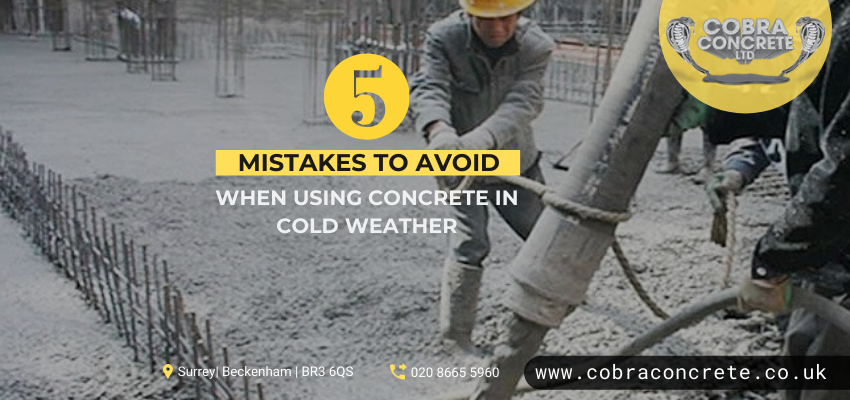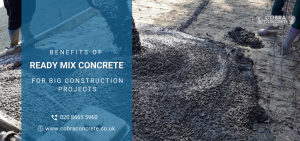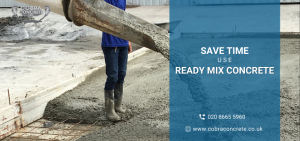Concrete is subjected to different curing conditions as the temperature fluctuates which makes the material gain sporadic strength. Contractors willing to protect fresh concrete have to take a bit of preparation before the climate changes. They should know the right equipment to be used at the job site like blankets and tarps. These help in preventing unsafe concrete development and avoid unnecessary delays.


Working with concrete becomes a complicated task in Croydon as the outdoor temperature goes below 40 degrees F and the air temperature goes below 50 degrees F. Such being the situation, contractors should follow a few do’s and don’ts when using concrete. Negligence to do so can lead to structural problems and delay your project.
5 Mistakes To Avoid When Using Concrete In Cold Weather
- Pouring The Material On Frozen Ground
Make sure you don’t pour concrete on to frozen ground even if you are in a hurry to complete your construction project. The effectiveness of the concrete curing conditions is largely dependent on how the concrete is poured and slabs are placed. It will take less time for the concrete near the surface to cure than the one close to the ground. The chances of the concrete cracking and structure disaster increases as the material can’t develop strength properly.
- Sealing The Material When The Weather Is Cold
The primary objective of using concrete sealers is to make the material more resistant to external element and weather exposure. Construction workers using concrete in cold weather should use a sealer which has been specially designed for extreme weather conditions. Even if you are in a hurry, don’t seal concrete when the temperature is below 10oC.
- Misjudging Daylight
The amount of daylight experienced by the people in Croydon becomes low during the colder months. Instead of running behind schedules, try to use your time wisely. If possible, pour and cure concrete during daytime as the temperature is warmer when there is an abundance of light.
- Allowing The Material To Freeze
Concrete in Croydon can cure properly only if it is kept in warm temperatures (not exceeding 10oC). If the temperature is below -4oC, fresh concrete can freeze really quick. It is the responsibility of the contractor to keep fresh concrete warm until its compressive strength measurement becomes appropriate. A suitable concrete temperature and maturity meter like SmartRock can be used to do this task.
- Using Cold Tools And Equipment
The temperature of the tools and equipment you are using to pour and cure concrete should also be as warm as the raw material. The composition and temperature can change if the tools you are using are too cold. This will have a negative impact on the strength of the concrete slab. Avoid the mistakes stated above when using concrete in cold weather and the concrete structure will be durable and beautiful.




